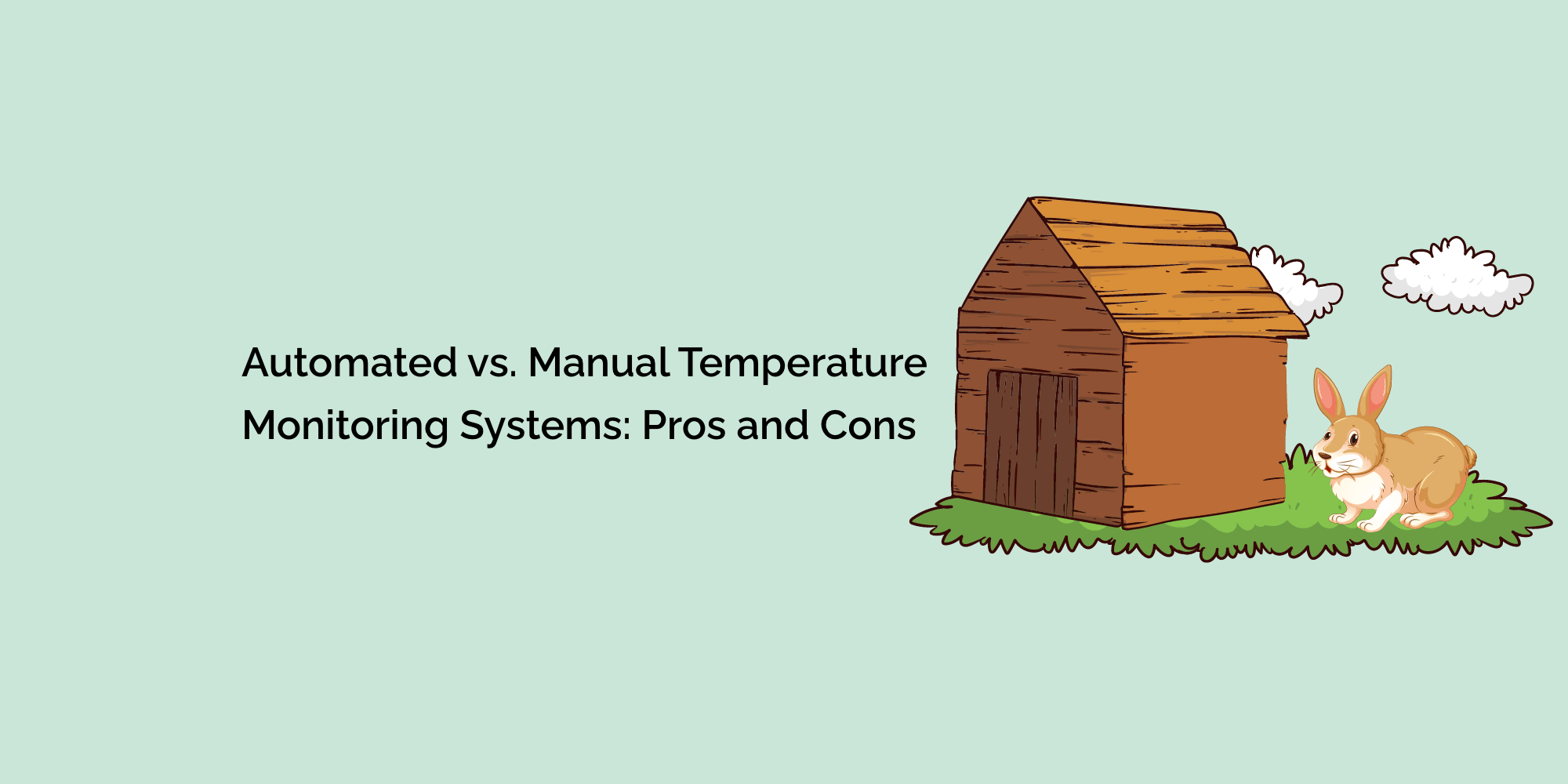Temperature monitoring is a critical aspect of various industries, including agriculture, healthcare, and manufacturing. In this blog, we will explore the two main approaches to temperature monitoring: automated systems and manual methods.
Both methods have their advantages and disadvantages, and understanding these pros and cons is crucial for choosing the most suitable temperature monitoring system for specific applications. Let's delve into the details and compare automated and manual temperature monitoring systems to make informed decisions.
The Importance of Temperature Monitoring
Understanding Temperature Fluctuations
Temperature fluctuations can have significant impacts on products, processes, and living organisms. In various industries, maintaining the right temperature range is crucial for ensuring product quality, optimizing efficiency, and safeguarding the health of individuals.
Temperature Monitoring Applications
Temperature monitoring finds applications in industries such as agriculture, food storage, pharmaceuticals, laboratories, and HVAC systems. Accurate temperature control is vital in each of these domains to prevent spoilage, ensure safety, and achieve desired outcomes.
Manual Temperature Monitoring Systems
How Manual Temperature Monitoring Works
Manual temperature monitoring involves human intervention to measure and record temperature data at regular intervals. This section will explore the manual methods commonly used, such as handheld thermometers and temperature logbooks.
Pros of Manual Temperature Monitoring
- Cost-Effective: Manual temperature monitoring systems are generally less expensive to implement, making them an attractive option for small-scale operations or budgets with constraints.
- Flexibility: Manual systems allow users to adapt to unique situations or changing requirements easily.
- Simplicity: Manual systems are easy to set up and use, requiring minimal training for personnel.
Cons of Manual Temperature Monitoring
- Human Error: Manual monitoring is susceptible to human error, leading to inaccuracies in readings or missed data points.
- Time-Consuming: Manually recording data at regular intervals can be time-consuming and may not be practical for continuous monitoring needs.
- Limited Real-Time Monitoring: Manual systems may not provide real-time alerts in case of temperature deviations, potentially leading to delayed responses to critical situations.
Automated Temperature Monitoring Systems
How Automated Temperature Monitoring Works
Automated temperature monitoring systems use electronic sensors and data loggers to continuously monitor temperature and store data in a centralized database. This section will explore various types of automated systems, including wireless sensors and cloud-based solutions.
Pros of Automated Temperature Monitoring
- Accuracy: Automated systems provide highly accurate and reliable temperature readings, reducing the risk of human errors.
- Real-Time Alerts: Automated systems can send immediate alerts when temperature thresholds are breached, enabling prompt actions to mitigate risks.
- Data Logging and Analysis: Automated systems store and organize vast amounts of temperature data, making it easier to analyze trends and make data-driven decisions.
- Compliance and Traceability: Automated systems aid in meeting regulatory requirements and provide a clear audit trail of temperature data.
Cons of Automated Temperature Monitoring
- Initial Investment: Automated systems typically require a higher initial investment for hardware, software, and installation.
- Maintenance and Calibration: Regular maintenance and calibration of automated sensors are necessary to ensure their accuracy and performance.
- Technical Complexity: Automated systems may require trained personnel to set up, configure, and troubleshoot the system.
Factors to Consider When Choosing a Temperature Monitoring System
Nature of Application
The specific requirements of the application, such as the sensitivity of the products to temperature fluctuations and the need for real-time monitoring, will influence the choice between manual and automated systems.
Budget and Resources
Available budget and resources will play a significant role in determining the feasibility of investing in an automated system. Smaller businesses or projects with limited funds may find manual systems more practical.
Regulatory Compliance
Industries with strict regulatory requirements, such as pharmaceuticals and healthcare, may benefit from automated systems that ensure compliance and provide robust data traceability.
Scalability
Consideration of future expansion or increased monitoring needs is vital when choosing a system. Automated systems are often more scalable to accommodate growing requirements.
Case Studies and Examples
This section will showcase real-life examples of how both automated and manual temperature monitoring systems have been implemented in different industries, highlighting their successes and limitations.
Conclusion
In conclusion, both automated and manual temperature monitoring systems offer distinct advantages and drawbacks. The choice between the two depends on the specific needs of the application, budget constraints, regulatory compliance, and scalability requirements.
Manual systems may be suitable for smaller operations with simple monitoring needs and limited resources, while automated systems are ideal for industries that demand continuous and accurate temperature monitoring with real-time alerts.
Understanding the pros and cons of each approach is essential for making an informed decision that best aligns with the goals and objectives of the organization or project.
Whichever system is chosen, the primary goal is to ensure optimal temperature control and guarantee the safety, quality, and efficiency of processes, products, and living organisms that depend on precise temperature management.








